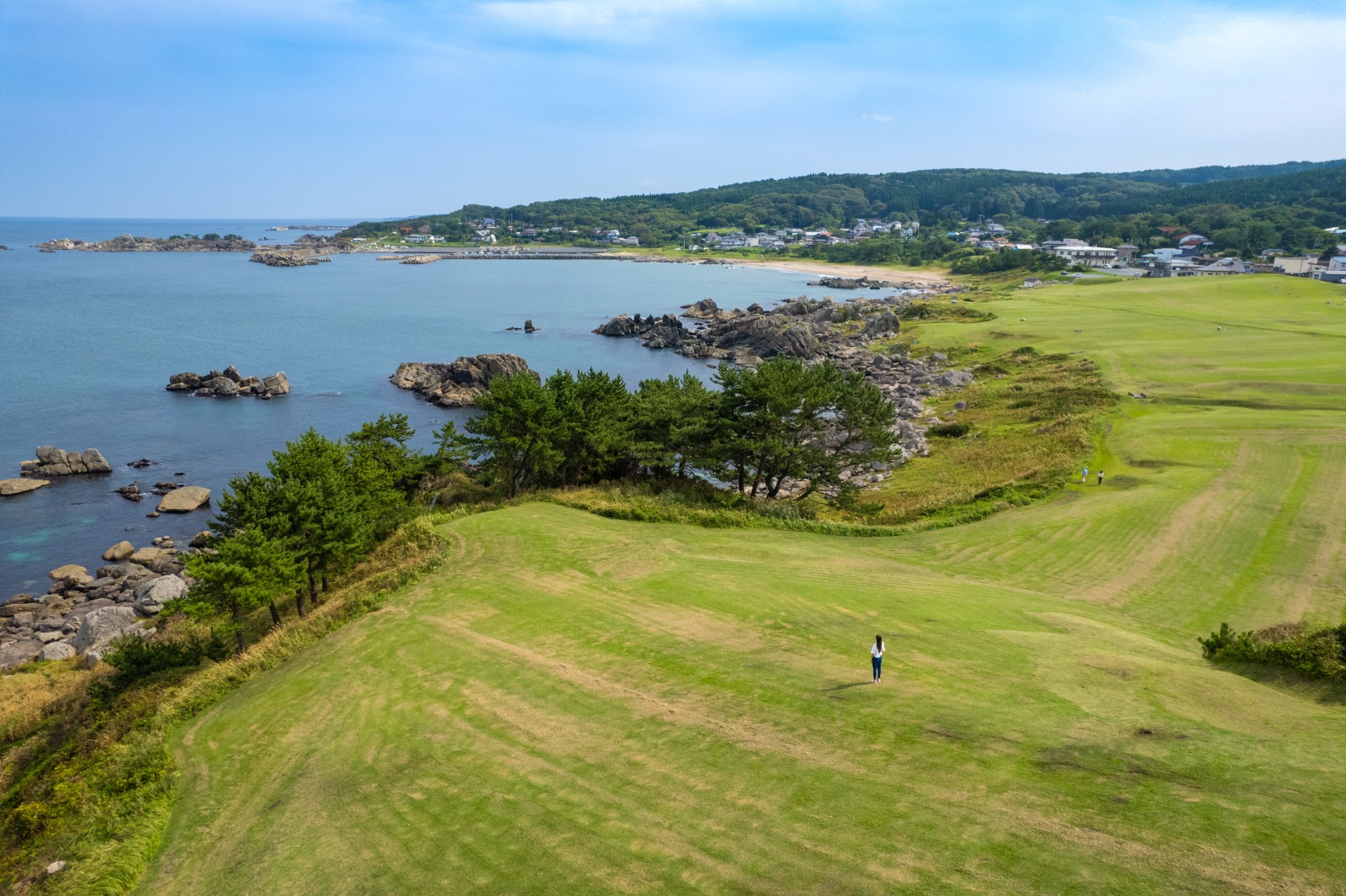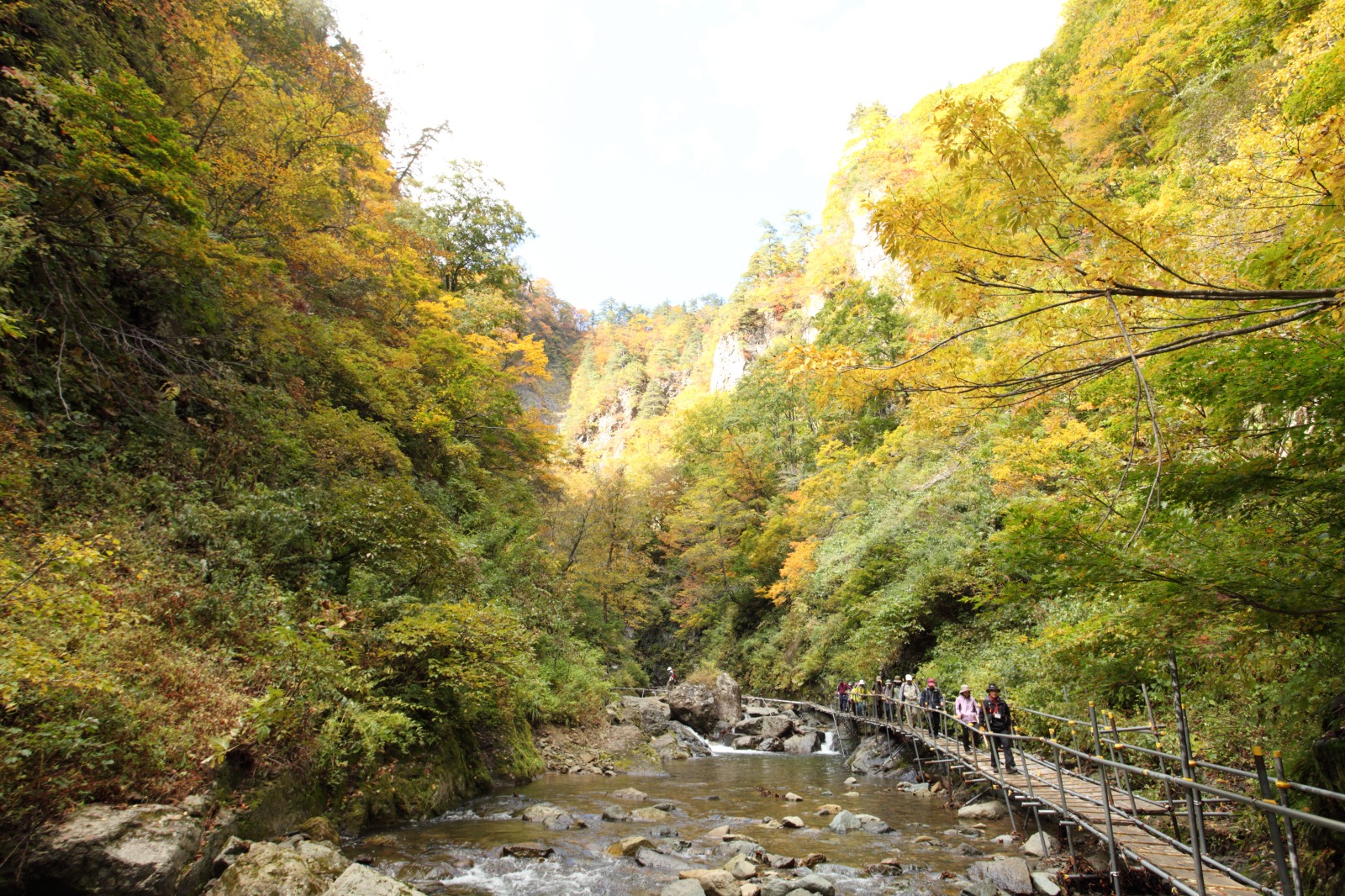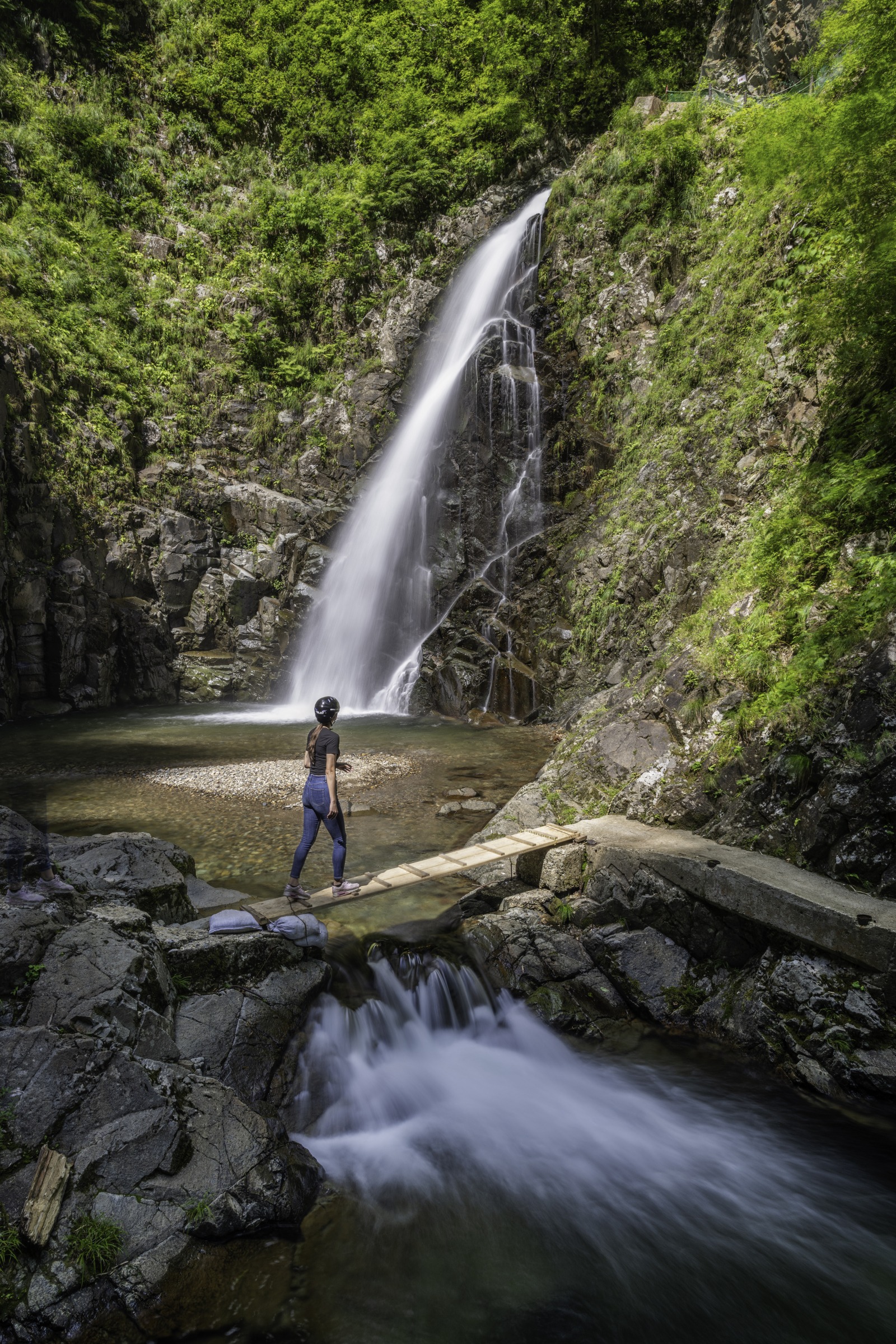Explore the great outdoors in Japan’s hiking paradise, Aomori!

Surrounded on three sides by water and covered in lush green forests and mountain peaks, Aomori is the perfect place to enjoy a nature hike through stunning scenery. While the prefecture contains a multitude of trails encompassing various levels of difficulty, the following is a selection of easy to moderately difficult courses that will give you a good introduction to Aomori’s natural wonders.
Oirase Gorge Walking Trail
This route follows the Oirase Gorge for slightly over fourteen kilometers from the Oirase Field Museum to the Nenokuchi bus stop on the shore of Lake Towada. Note that since Towada is a crater lake, it is actually located at a higher elevation than the gorge, making travel in its direction an uphill climb. The one-way journey takes about five hours and allows you to enjoy the sight of the beautiful rushing rapids and pristine forests for which the gorge is known. There are also several majestic waterfalls along the way, including the three-tiered Kumoi no Taki Falls and the spectacular Choshi Otaki Falls. As there is a regular bus service connecting the starting and ending points of the gorge, if you time your journey correctly, you can avoid repeating the entire distance on the return. This hiking route is particularly popular in autumn, when the vibrant reds and yellows of the changing leaves juxtaposed with the vivid green of the moss-covered rocks and the white of the churning rapids create a rich tapestry of color.
Anmon Falls Trail (Shirakami Sanchi)
Shirakami Sanchi, a sprawling mountain range straddling the border of Aomori and Akita prefectures, has been designated a World Natural Heritage Site by UNESCO. It is also home to one of the world’s largest old-growth beech forests. Together with the island of Yakushima in Kagoshima Prefecture, this forest is famous for having inspired the mystical scenery used for the setting of the Studio Ghibli animated film Princess Mononoke. While the core part of the pristine forest is a protected World Heritage zone that requires a permit to enter, there is a walking course of about one or two hours starting from Aqua Green Village ANMON in Nishimeya Village that will take you through the beech forests. At the same facility, you can also find the trailhead for the hiking course up to another of the Shirakami Sanchi region’s highlights, a set of three waterfalls known as the Anmon Falls. Although the round trip to the top of the three-tiered falls and back takes two or three hours, it is well worth it for spectacular views of the secluded falls. Note that you will need to register your hiking party at the start of the trail up to the falls, and you must be accompanied by a guide to access the uppermost tier of the falls. (The shorter beech-forest exploration path does not require registration.) The trail to the falls opens in June and closes in mid-November.
Michinoku Coastal Trail (Tanesashi Coast Section)
The Michinoku Coastal Trail is a long and well-maintained trail extending from Kabushima Island in Hachinohe City to Soma City in Fukushima Prefecture, developed as a symbol of the region’s recovery from the 2011 Tohoku earthquake and tsunami. While taking on the entire approximately 1,000 kilometers of the trail may seem like a rather daunting challenge, you can get plenty of enjoyment by hiking a shorter section. The first (or, depending on your perspective, last) twelve kilometers of the trail along the Tanesashi Coast are particularly recommended, as they are gentle without many hills, making this section one of the easiest for inexperienced hikers. At the same time, it offers a diversity of stunning sights including beautiful rocky reefs blooming with seasonal flowers, a beach with rare “singing sand,” and a natural lawn stretching all the way to the water’s edge. The Tanesashi Coast section begins at Kabushima Shrine, where reddish orange torii gates stand out brilliantly against the blue of the sea and sky. The starting point is easily accessible from JR Same Station, about 25 minutes by train from JR Hachinohe Station on the JR Hachinohe Line.
Hakkoda Mountains and Mount Odake Course
This climb takes you up to the 1,585-meter summit of Mount Odake, the highest peak in the Hakkoda mountain range. Although a bit more challenging than the other hikes listed here in terms of elevation gain, it is still feasible for beginners. The course starts near the Sukayu Onsen hot-spring village, famous for its “Thousand-Person Bath” (a slight exaggeration, as the enormous wooden indoor bath can actually only fit a fraction of that number). A long, relaxing soak in the thermal waters after your hike is sure to relieve the fatigue of your aching leg muscles. The round trip to the summit of Mount Odake and back takes four to five hours, but climbers will be amply rewarded with breathtaking views of the Pacific Ocean, the Sea of Japan, and Mount Iwaki looming over the Tsugaru Plain. Like many of Aomori’s hiking courses, the scenery is beautiful year-round but especially spectacular in the season of autumn colors.
Aomori contains numerous routes suitable for a wide range of hikers, from novices to experienced trekkers, and the above is only a small sampling. However, we hope it gives you a taste of what this remarkable prefecture blessed with nature’s bounty has to offer. Now, lace up your hiking shoes, strap on your backpack, and head out to explore the great outdoors in Aomori!











